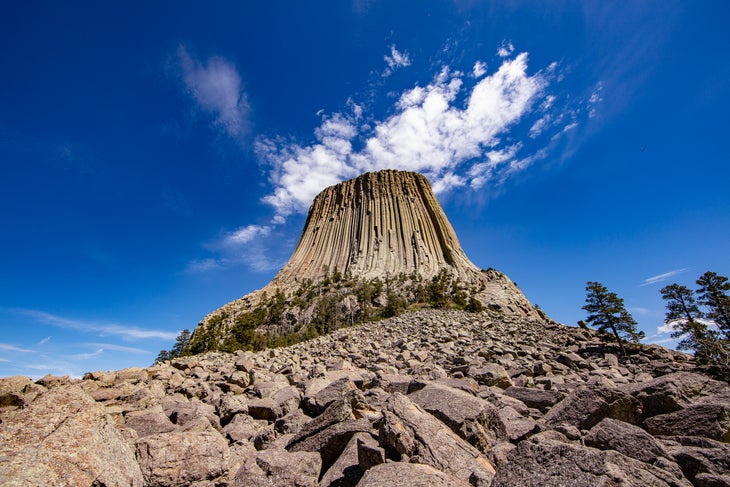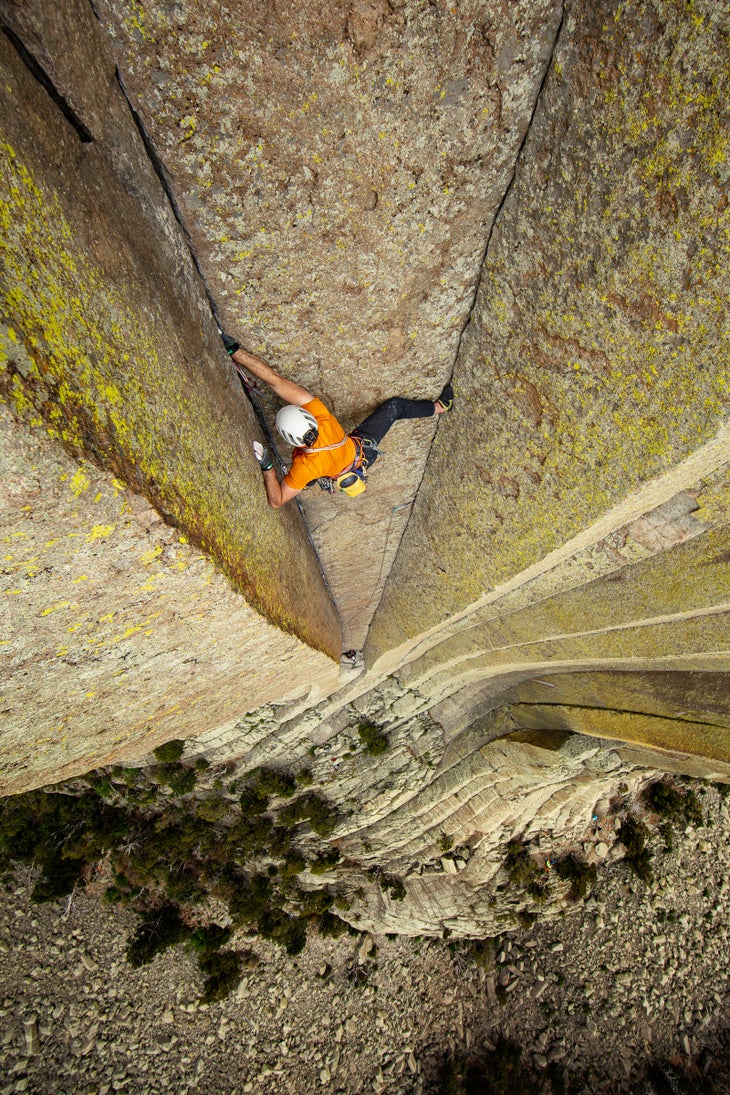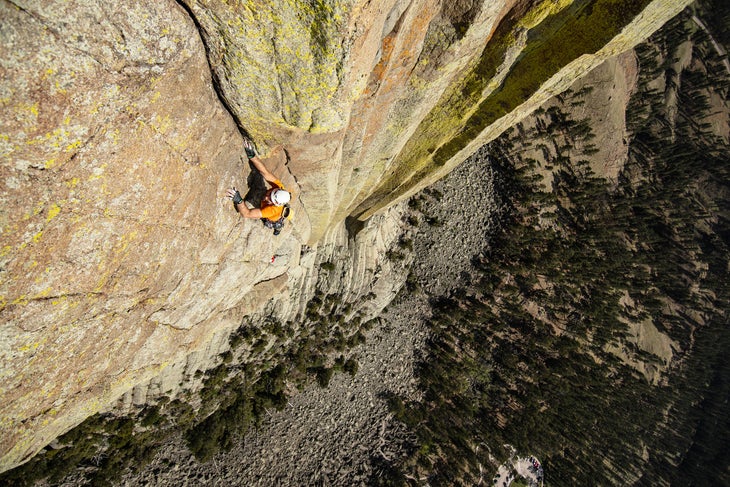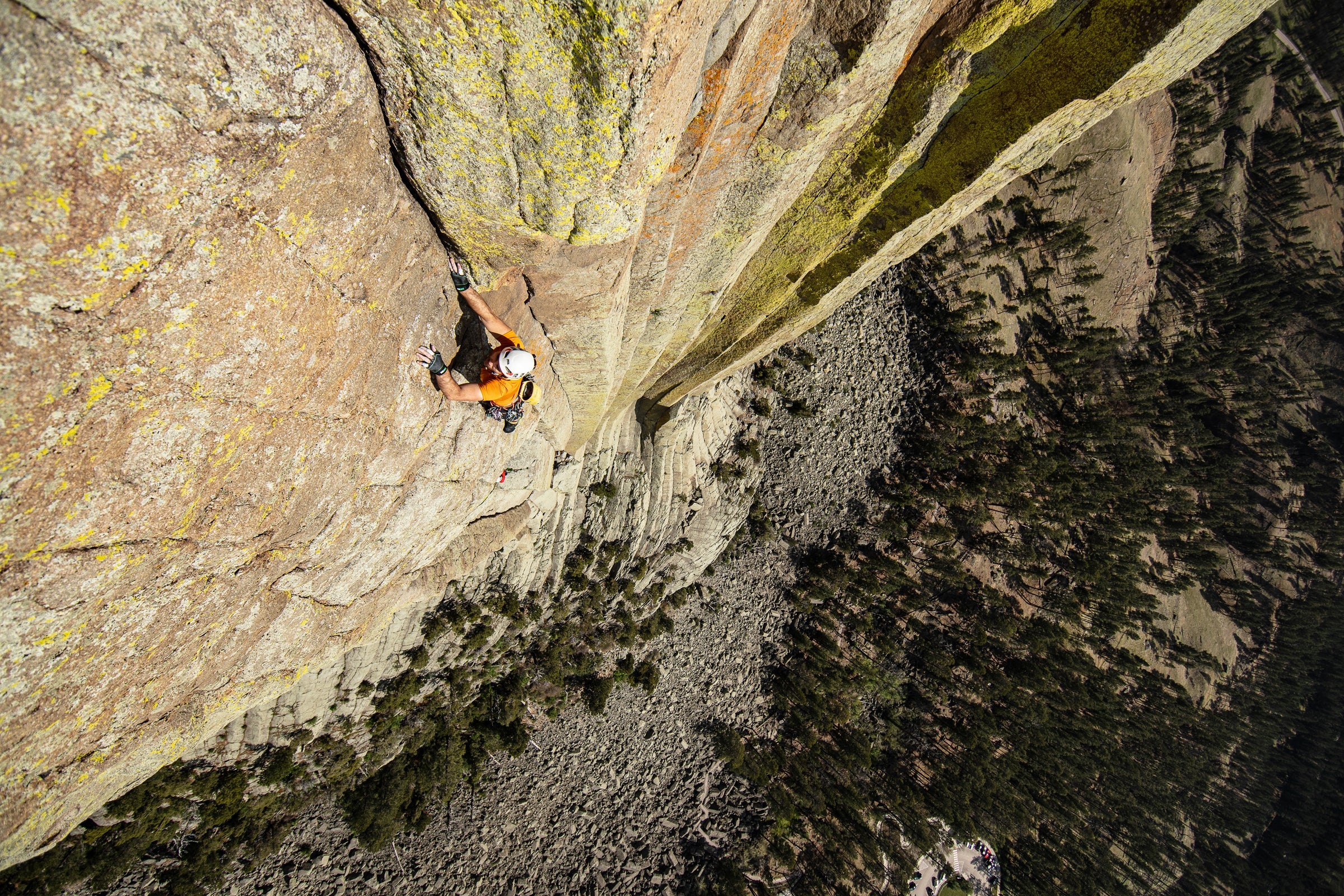The 38-year-old blind climber Jesse Dufton has made an impressive ascent of Wyoming’s Devils Tower, on the 500-foot , becoming the first blind person to lead the formation. Dufton—likely the —is a gear purist and remarkably prolific. When I spoke with him last April, he’d climbed more than 1,500 routes on sight (or “unsighted,” as he likes to say) across the British Isles.
Born with the degenerative genetic condition rod-cone dystrophy, Dufton‚Äôs vision went from poor to horrendous in childhood, and he was legally blind by his early 20s. Though he lost his eyesight, his love of climbing‚Äîwhich began after his first lead, aged 11‚Äîstayed for the ride. In addition to hundreds of traditional routes, Dufton has finished hard sport climbs, made alpine-style first ascents in Greenland, and last year became the first blind person to make the first ascent of a difficult multi-pitch route: “Eye Disappear” in Morocco.
Dufton only became aware of Devils Tower a few years ago, after attending a talk by French phenom Catherine Destivelle, who soloed El Matador in 1992. “It caught my interest for a couple of reasons,” he said. “Firstly, the rock formation is awesome. The columns are like some crags in the UK (Fairhead and Kilt Rock) where I have got on well with the climbing.”

Because the route follows a system of vertical columns, requiring one to stem up the rifts between them, it also presented a manageable multi-pitch objective for Dufton from a route-finding perspective. Going off-route is a constant concern for Dufton, particularly on face climbs. “It’s hard to go off-route when climbing columns,” he explained. “Secondly, I thought it would be a good route for me to push myself. 5.10d is at the limit of my current trad onsight ability. I’m also reasonably tall, and I had hoped this would give me an advantage on El Matador, as I would be able to get into a bridge sooner than shorter climbers.”
Dufton climbs using a “sight guide,” his wife, Molly. Typically, in addition to belaying, Molly calls out possible holds to her husband as he ascends. But on El Matador, Dufton was primarily on his own. “She couldn’t really give anything other than encouragement,” Dufton said. “She couldn’t spot holds for me. There aren’t many!”
Dufton, who called El Matador “the most brutal trad route I have ever attempted,” led five of the route’s six pitches, with Molly tackling one of the easier leads for logistical reasons. As a blind climber, sometimes the crux sequences for Dufton are different than for a sighted climber, but on El Matador the route’s standard crux, a box-stemming marathon of a second pitch, was also the kicker for Dufton. “I don’t think I have ever tried as hard as I did on [that] pitch,” he said. “The guidebook says it’s [125 feet], but it seems never-ending when you’re on it, like climbing an infinite elevator shaft. It’s one of the most memorable pitches I’ve ever climbed. I’m not sure I had the best beta, but I found myself doing this iron-cross style double-palm-down to move my feet up. My mate reckons the columns are a bit wider apart now, given how hard I was pushing on them…”

Although the columns made the routefinding straightforward, the friction-based nature of the climb also made it difficult for Dufton to find footholds. “None of the moves in the stem box are stoppers,” he said, “but it is unrelenting, and the cumulative fatigue makes it desperate at the top.” Dufton said he only found two tangible footholds on the entire crux pitch. “For every other foot placement I was smearing in the stem. I’m sure there must have been small edges to make the foot placements a bit better, but because I can’t see, I didn’t find any of these. I’ve never known such pain in my calves.”
While the column has seams to offer jamming on either side for most of the way, in the last quarter of the pitch the cracks seal up entirely, forcing the climber to full-stem, with both hands and both feet. “When you can’t see what’s coming up, it’s quite hard to commit to such a strenuous approach,” Dufton said. “You have no idea how many moves you’ll have to do like this, and no idea when the next gear placement might come.”
Dufton’s style typically revolves around static, ultra-controlled movements and surefire placements, but El Matador was a toss-up at times. He fell more than once, and had a share of sketchy moments.

Shortly after leaving the first belay ledge, he placed a bomber nut around six feet up. “But one of the many problems about not being able to see is that you can accidentally kick your gear,” Dufton said. “Which is what I did as I moved up.”
Although the nut stayed put when he kicked it, he’d somehow kicked the gate open on his quickdraw, unclipping it from the nut. “It sailed down the rope to meet Molly. I’m now [13 feet] above the belay with no runners. Not the relaxing start I was after.” This is a nervy situation to be in when you can see. When you’re blind and doing everything by touch, it becomes downright heinous.
Dufton also had to give up his onsight after slipping on a small plant growing out of the right-hand seam. “Obviously, if I were able to see, I would have seen the plant and avoided it, but I can’t. I [stepped] on the plant, and promptly slipped and plummeted.”
Another sketchy section came at the tail end of the crux. Dufton had placed a nut, reached back on his right hip to find a quickdraw, and “felt the Dyneema strands of what I thought was my last extendable quickdraw.”
He grabbed the attached carabiner and clipped it to the nut’s wire, only then realizing that what he’d grabbed and clipped onto his nut wasn’t actually a quickdraw, but a cam. “Fumbling madly for a quickdraw, my feet started to slide,” Dufton said. “I groped again, snapped in another [carabiner] to the wire before my panic-stricken mind realized that this second crab also held a cam.” White-knuckling it, he ultimately managed to remove the cams, search his opposite hip, and find a draw to clip in.
Add the pressure of being unable to audit the placements itself, and a blind climber like Dufton is truly adrift on a big route like El Matador. He can feel with his hands and use his best judgment, but particularly on a stamina-based line like this, he can’t spend much time finicking about with placements. He has to trust his gut and go on. “It can be quite harrowing,” he admitted. “You don’t get the reassurance of looking at gear and knowing it’s solid. You just have to quest into the unknown, trusting that your gear will save you if you take the ride.”
Filmmaker documented Dufton’s work on El Matador. His film about the ascent will premiere in late October as part of 2024’s .


